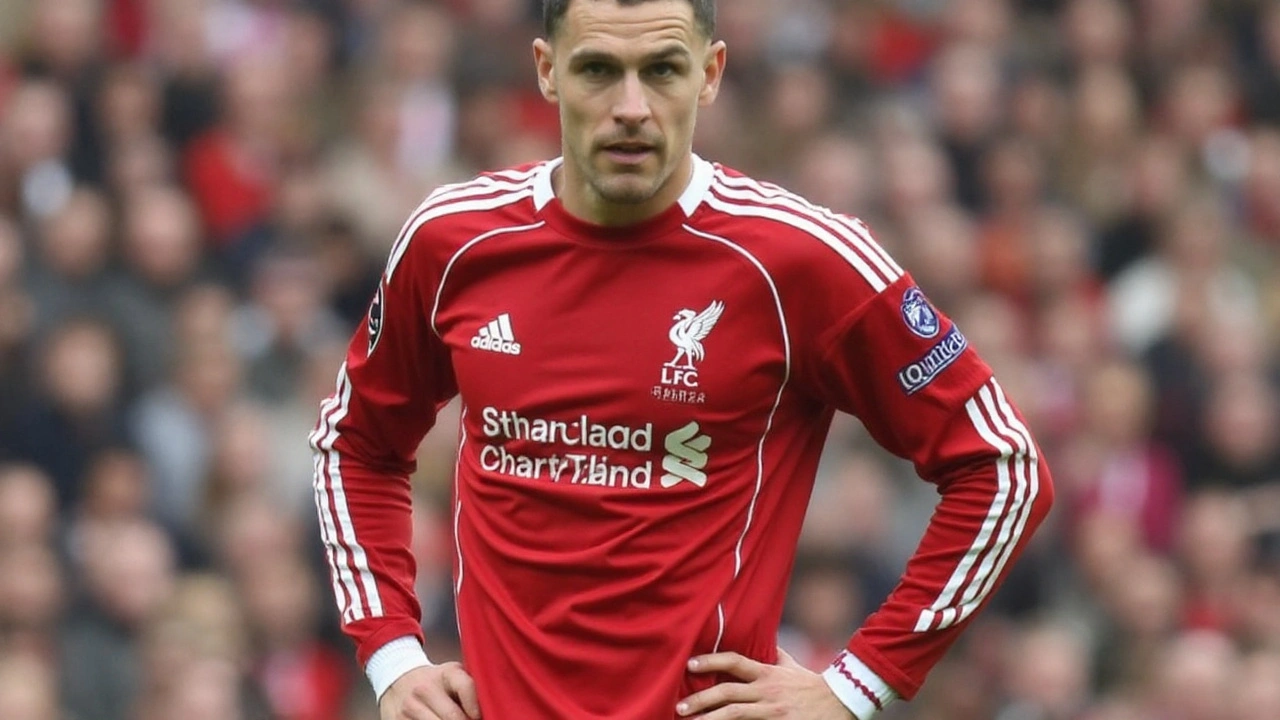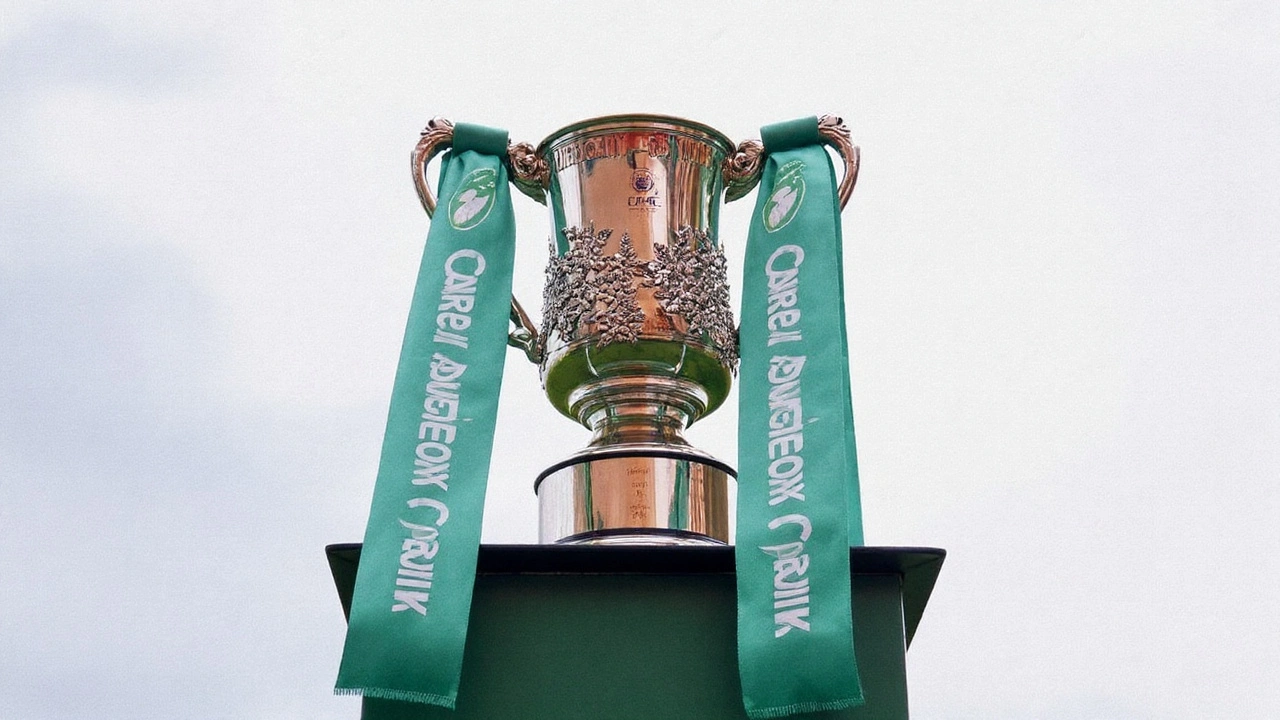The latest Carabao Cup draw is out, and it’s shaping up to be a night of regional rivalries and potential upsets. Sixteen clubs that survived the third round will face off on 27 October 2025, with the eight winners earning a ticket to the quarter‑finals and, ultimately, a shot at Wembley on 22 March 2026.
Geographical Split Keeps Travel Short
True to tradition, the draw has been split into northern and southern sections. This format reduces travel costs for clubs and fuels local bragging rights, as teams are more likely to be matched against familiar opponents. The northern bracket will see clubs from the Midlands up to the North East tussle, while the southern side will feature sides from the South Coast down to Wales.
By keeping the fixtures regional, the competition preserves its reputation as a realistic platform for lower‑league teams to test themselves against top‑flight opposition without the logistical nightmare of cross‑country trips.

Teams to Watch and Giant‑Killing Potential
Premier League representatives Brentford and Crystal Palace have already booked their spots, adding top‑tier intrigue to the mix. However, the draw also includes surprise packages that have punched above their weight: Grimsby Town, fresh from a shock victory over a Championship side, and Swansea City, who have flown the flag for the Football League with a string of impressive cup performances.
- Brentford – looking to cement their growing Cup pedigree after last season’s deep run.
- Crystal Palace – hoping to translate solid league form into knockout success.
- Grimsby Town – the underdog story that could ignite another giant‑killing.
- Swansea City – a club with Cup experience eager to surprise the Premier League.
The fourth round is historically the stage where the magic happens. Ten‑time winners Liverpool and serial champions Manchester City have both dominated the competition in recent years, but the regional draw often creates match‑ups that level the playing field. A well‑timed defensive masterclass or a set‑piece goal can tip the balance, and fans love the possibility of a smaller club marching into Wembley.
Beyond the headline names, the remaining slots are filled by a blend of Championship hopefuls and ambitious League One outfits, each dreaming of a night that could rewrite their season narratives. The compact schedule – just three wins away from the final – means that every decision, from squad rotation to tactical tweaks, carries weight.
Looking ahead, the winners of these eight fixtures will join the elite eight that continue the race to March’s grand finale. With Newcastle United having broken a 70‑year trophy drought by beating Liverpool 2‑1 in the previous final, the upcoming edition promises fresh storylines, fresh heroes, and perhaps a fresh champion.


Comments (10)
Man, the Carabao Cup draw feels like a tiny philosophy class on destiny and chance, dont ya think? The north‑south split is kinda like life’s own geography, makin us confront what’s close and familiar. I cant help but wonder if Grimsby’s underdog vibe is a reminder that every small club carries a big dream inside. Maybe this season we’ll see a few giants toppled, and that’s the beauty of the cup-short, sweet, and surprising.
Alright, let’s cut the crap – the organizers love their regional bragging rights, but it’s really just a cash‑grab disguised as tradition. Splitting north from south keeps travel cheap, sure, but it also guarantees predictable match‑ups that feed the same old narrative. Meanwhile the big boys like Liverpool and Man City get a free pass to the later rounds while the rest scramble for a shot at Wembley. It’s a sham that pretends to be romance.
Yo folks, the draw’s looking 🔥! Brentford and Crystal Palace bring the top‑flight sparkle, but don’t sleep on Grimsby – they’re the real dark horse 🐴. Swansea’s cup pedigree could surprise anyone, especially with that coastal flair. I’m hyped for the regional rivalries; they’ll light up the socials and give us plenty of meme material 😂. Let’s see which underdog writes the next chapter.
Honestly, this whole “regional split” is just a covert ploy by the football elite to keep the lower‑league clubs in their place – a classic puppeteer move. The green‑and‑gold banners of the North will march on, but the Southern clubs will quietly conspire to protect their own, all while we, the faithful, are left to chew on empty promises. It’s a circus of color, a tapestry of deception, and yet we cheer like it’s all innocent. Wear your scarves, but keep your eyes open.
When we gaze upon the Carabao Cup draw, we are not merely reading a list of fixtures; we are witnessing a microcosm of ambition, tradition, and the relentless pursuit of glory. The northern and southern bifurcation is more than a logistical convenience; it is an echo of England’s very own historical divides, a reminder that geography can shape destiny. In the North, clubs from the Midlands to the Northeast will confront each other, each with its own storied past and a hunger that stems from years of battling in the lower leagues. Meanwhile, the South will produce its own drama, where coastal breezes meet the grit of Welsh determination, forging match‑ups that could rewrite local rivalries. Brentford, with its recent ascent, carries the weight of a club seeking to cement a cup pedigree, while Crystal Palace hopes to translate league consistency into knockout success. Grimsby Town, still tasting the sweet after‑glow of their shock win, embodies the quintessential underdog narrative that the magic of the cup celebrates. Swansea City, seasoned by previous cup runs, brings a blend of experience and regional pride that could catch the eyes of even the most jaded supporters. And then there are the perennial giants: Liverpool and Manchester City, whose presence looms large, yet the regional split may force them into battles that test their depth and tactical flexibility. A defensive masterclass from a lower‑division side can nullify the firepower of a Premier League titan, proving that football is as much about tactics as it is about talent. Set‑piece proficiency, often overlooked, can become the decisive factor in a tightly contested tie, rewarding teams that practice the fundamentals. The compact schedule-requiring three victories to reach the final-means managers must judiciously rotate squads, balancing fresh legs with the desire to field their strongest eleven. This strategic juggling act adds yet another layer of intrigue to every fixture. Fans, ever the faithful arbiters of drama, will fill the stands and online forums, chanting and debating as if each match were a battle for the very soul of their community. The ultimate reward- a place at Wembley on March 22, 2026- is more than a stadium; it is a beacon of hope for clubs dreaming of eternal glory. As we look forward to October’s clashes, we must remember that the cup’s true beauty lies in its unpredictability, its capacity to elevate the humble and humble the exalted. Let the games begin, and may the most deserving story prevail.
Looks good.
Hey everyone, big shoutout to the clubs taking the field next month. The regional draw should keep the travel light and the energy high, which means more focus on the games themselves. If any of the underdogs pull off a surprise, it'll be a huge morale boost for their squad and fans alike. Keep supporting your local teams, and enjoy the cup run!
The delineation of the fixtures into northern and southern sectors appears judicious, particularly in terms of logistical considerations. Such an arrangement not only reduces travel expenditures but also preserves the integrity of regional rivalries that have long been a hallmark of English football culture. It is reasonable to anticipate that clubs will approach these encounters with heightened tactical preparation, cognizant of both the competitive stakes and the limited recovery intervals inherent to the tournament schedule. Consequently, the forthcoming round promises a display of strategic acumen commensurate with the prestige of the Cup.
Listen up, we all love the drama, but let’s keep the trash talk in check and celebrate the sport. The draw gives every team a fair shot, and that’s the point-unity through competition. So pump up your team spirit, not your haters, and let the matches speak for themselves.
From a performance‑analytics standpoint, the regional segmentation could optimize squad rotation cycles, reducing cumulative load and enhancing peak efficiency during knockout phases. Leveraging this structural advantage aligns with high‑impact KPI frameworks, fostering a sustainable competitive edge. Moreover, the potential for statistical outliers-such as lower‑tier clubs achieving a positive delta in expected goals-adds a compelling narrative for stakeholder engagement. In essence, the cup’s architecture is a catalyst for innovative tactical deployment, and I’m bullish on the upside trajectory for both giants and minnows alike.